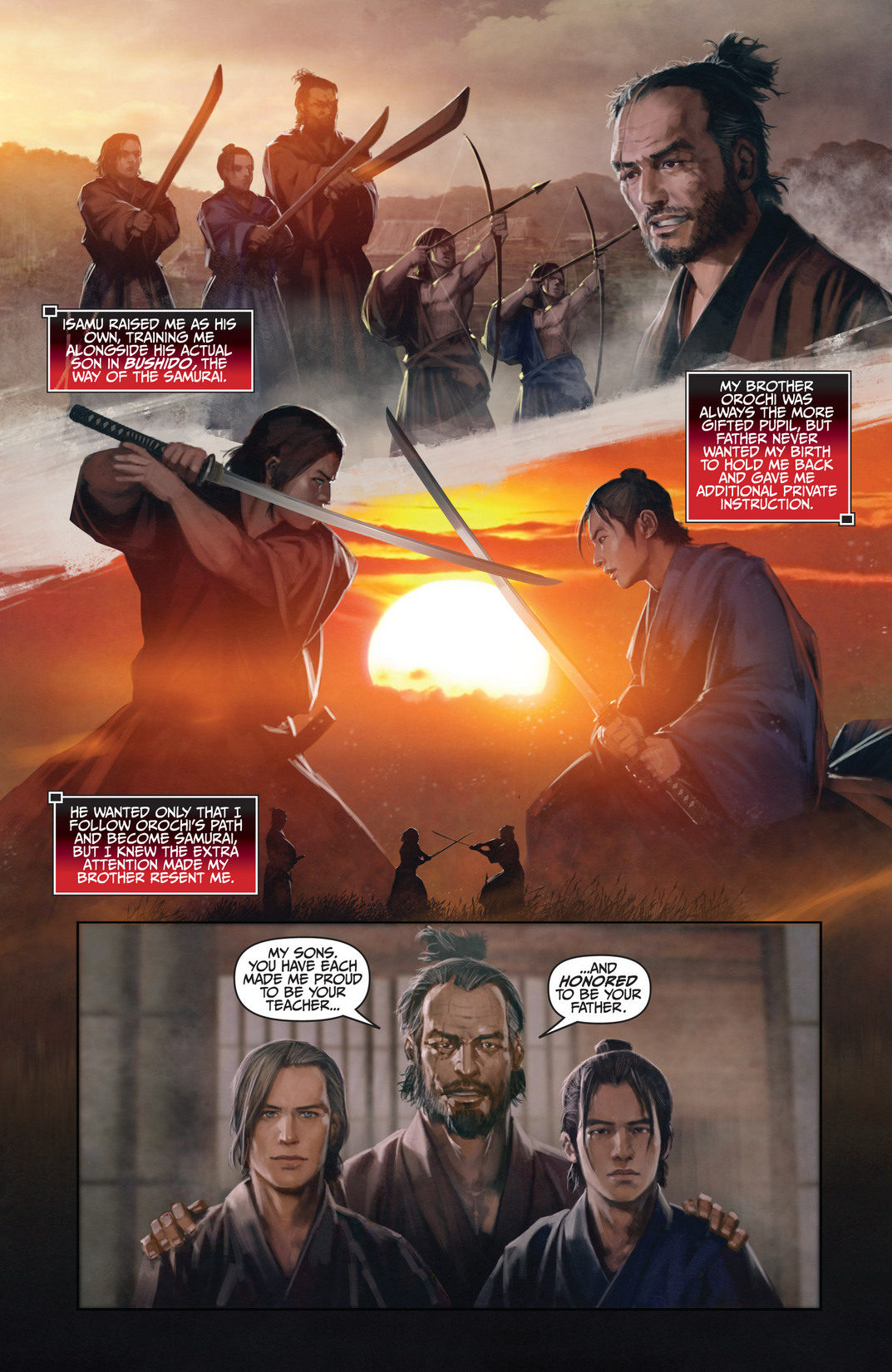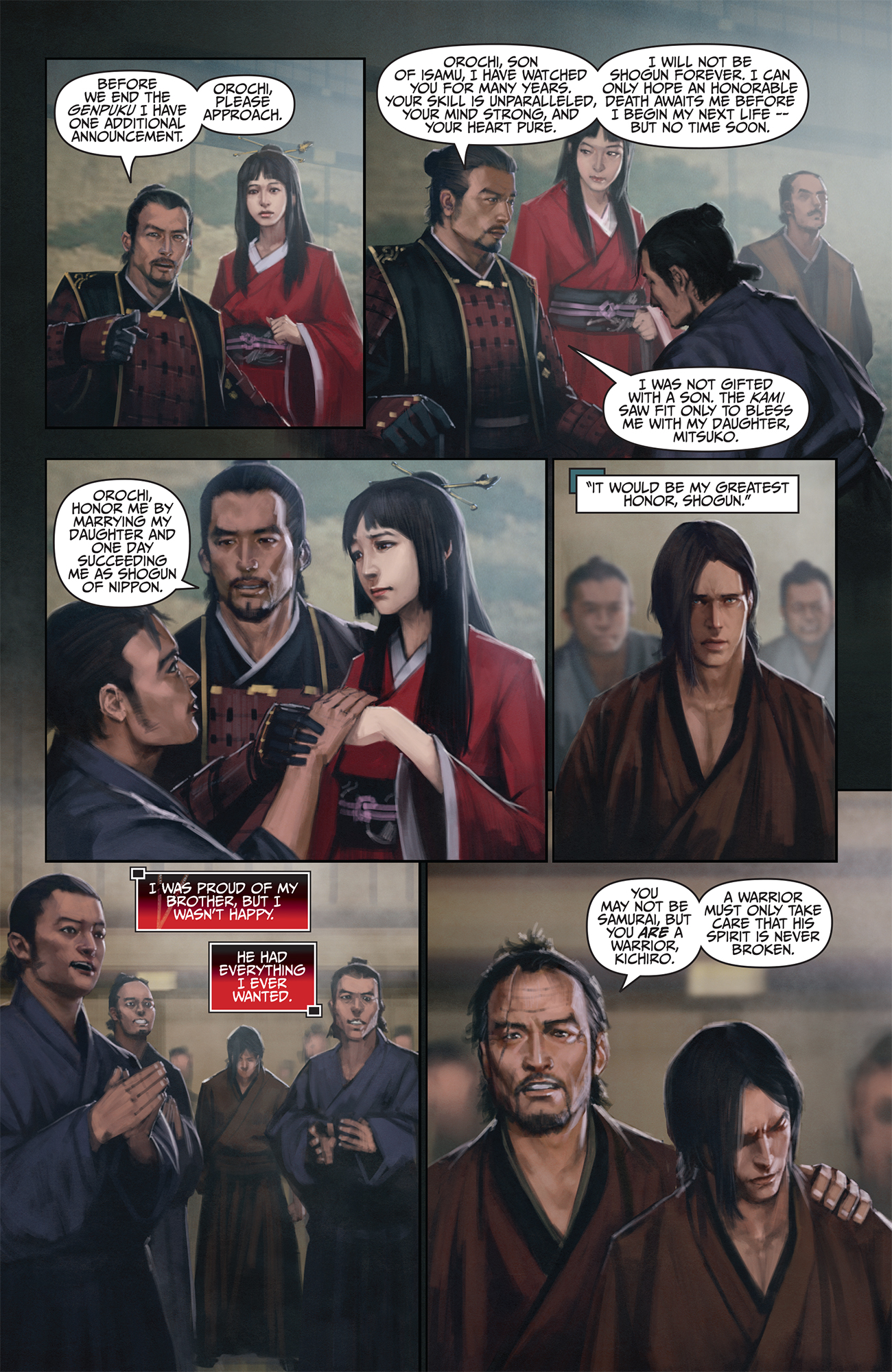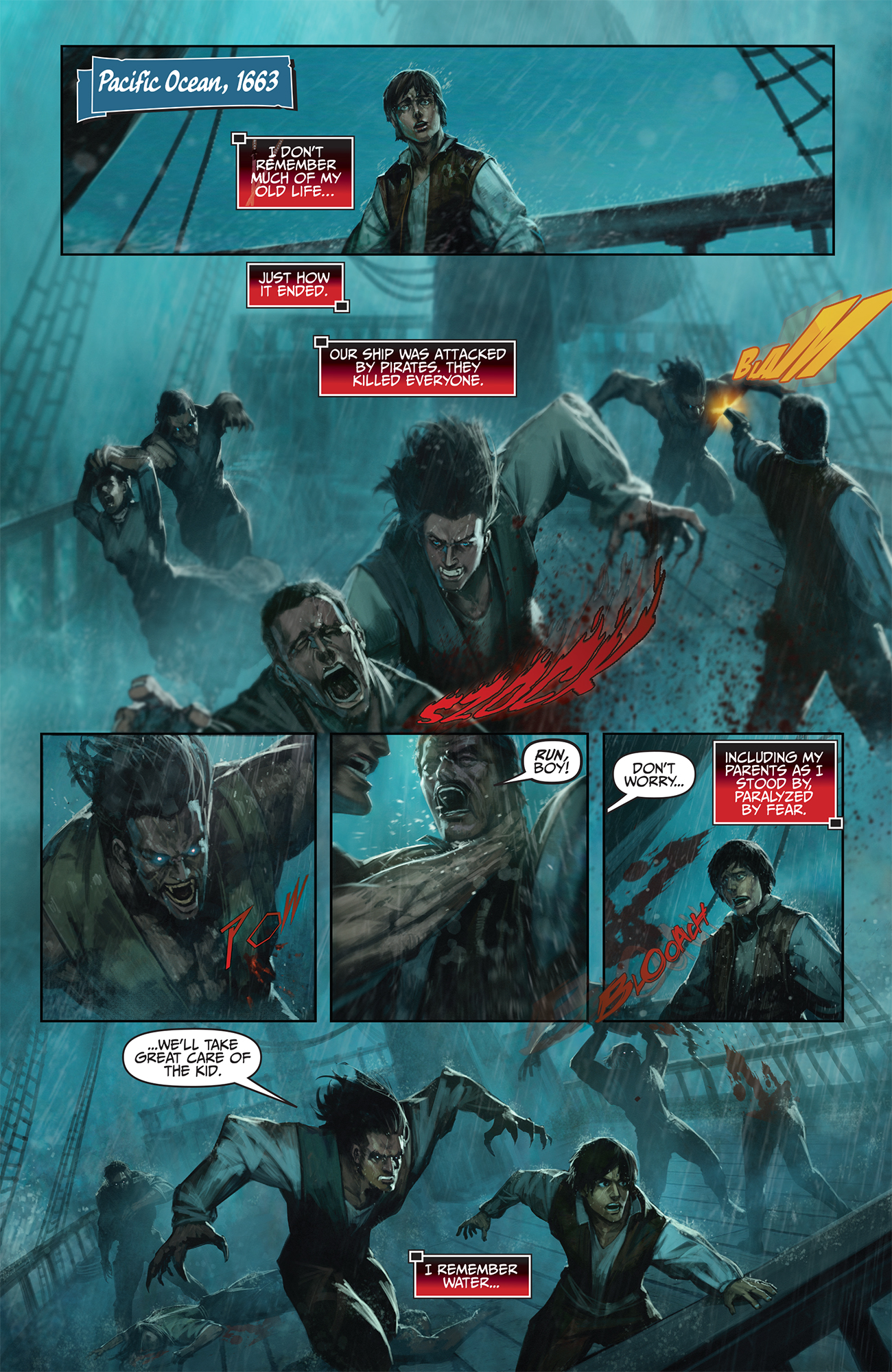I grew up watching samurai films—everything from the high to the lowbrow—so Bushido #1, which seems visibly inspired by the classics, drew my interest. My reservations going in surrounded the white protagonist. I couldn’t help but think about the atrocity that was The Last Samurai. I remained hopeful that Bushido wouldn’t depict a culture as one-dimensional as the one that Tom Cruise had little trouble gaining platinum membership status into. After the first issue, at least, I wasn’t disappointed. How could I be? These samurai have to fight vampires.

Kichiro, which means “lucky one,” is our protagonist, and most of the first issue follows his struggles as an outcast. After all, he isn’t Japanese, nor is he lucky; when he was a child, his family was attacked while crossing the Pacific Ocean. He jumped shipped and washed up on a sandy Japanese shoreline only to be found by his adoptive father, Isamu, who raised him as his own child. Despite this, as well as being raised according to the bushido code (way of the samurai), he is held out of the genpuku ceremony and therefore is not officially bestowed the title of samurai—it’s an honor not so freely given.
The writing is really excellent. The life that Kichiro finds himself leading is interesting all by itself. In a setup like this one, with vampires on the horizon, the status quo tends to be boring—to put it bluntly—as the purpose of the story is to then move away from that status quo to something a little… bloodier. In Bushido, however, Kichiro’s woes feel genuine, and there’s enough drama to sustain a story on its own without the threat of vampires. Kichiro is a real living and breathing character with plenty of depth and room for growth.

And if one doesn’t look at the cover too closely and fails to notice the fangs on Kichiro’s enemies, the vampires come completely by surprise. At around the halfway point, they attack, and before this moment, there is no mention of anything that could be considered beyond reality—up until that point, it feels like a story that, more or less, deals with real world problems only. This sort of misdirection isn’t an easy thing to accomplish, and what it does is it allows the reader to feel the shock felt by the characters in the book. It’s as if vampires are attacking the real world that we live in.
What I love most about this comic is the artwork. Jessada Sutthi’s illustrations look like real life and this gives the story a very cinematic feel. Even minor characters have faces that are worth a thousand words—scars that are deep and plentiful and streaks of grey hair—it’s as if they hired actors to play these parts. Sutthi, quite surprisingly, is new to the comic book scene. I hope this is the beginning of a long and prolific career for him.
The excellent handling of this story can be credited to Rob Levin, writer, who is the opposite of inexperienced. With over a hundred titles gracing his résumé—and a good number of them falling under the category of horror—Bushido is in the right hands. Again, the way he managed to develop the world that these characters live in is remarkable. I could read a whole five-issue series about Kichiro the outcast without anything resembling a vampire, and I’d love it.

Bushido is unlike most serialized runs. In anticipation of Halloween, a new issue is being released every Wednesday. This is a must read, as I wholeheartedly believe it captures the very best of both vampire horror and feudal Japan. Kichiro is a hero in the tradition of Batman, fighting fiercely and selflessly for people who consider him to be more trouble than he’s worth. Kichiro is a hero I can stand behind.